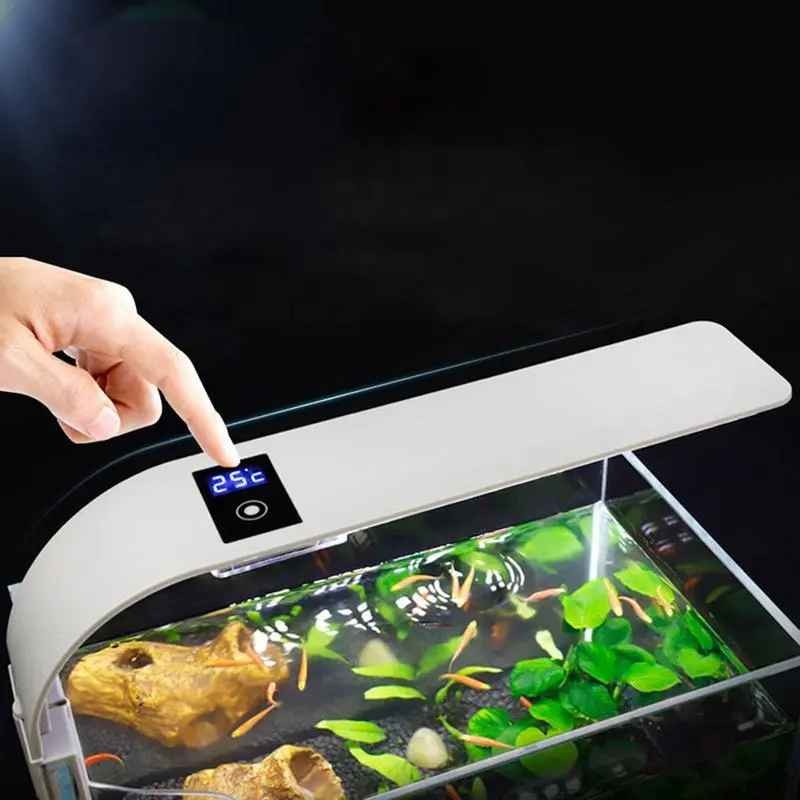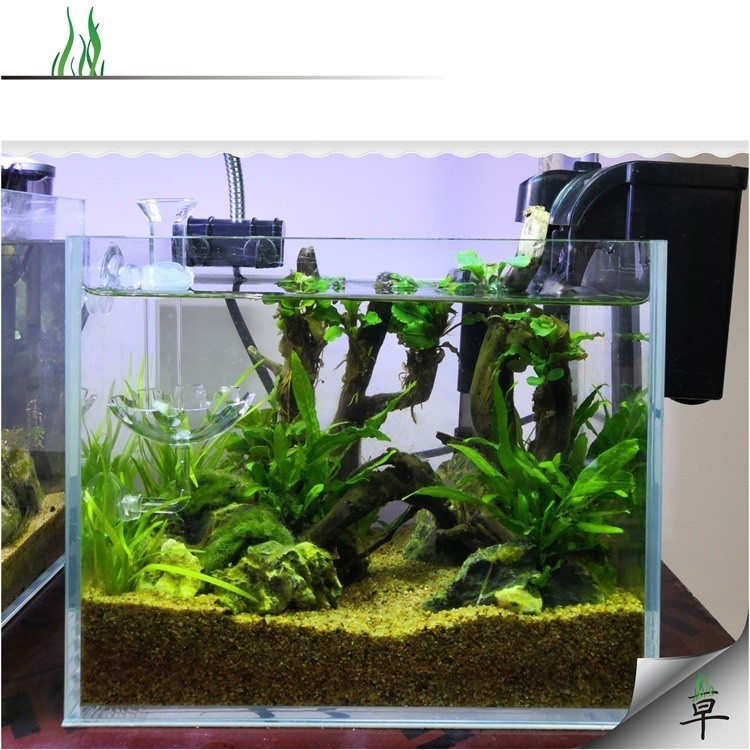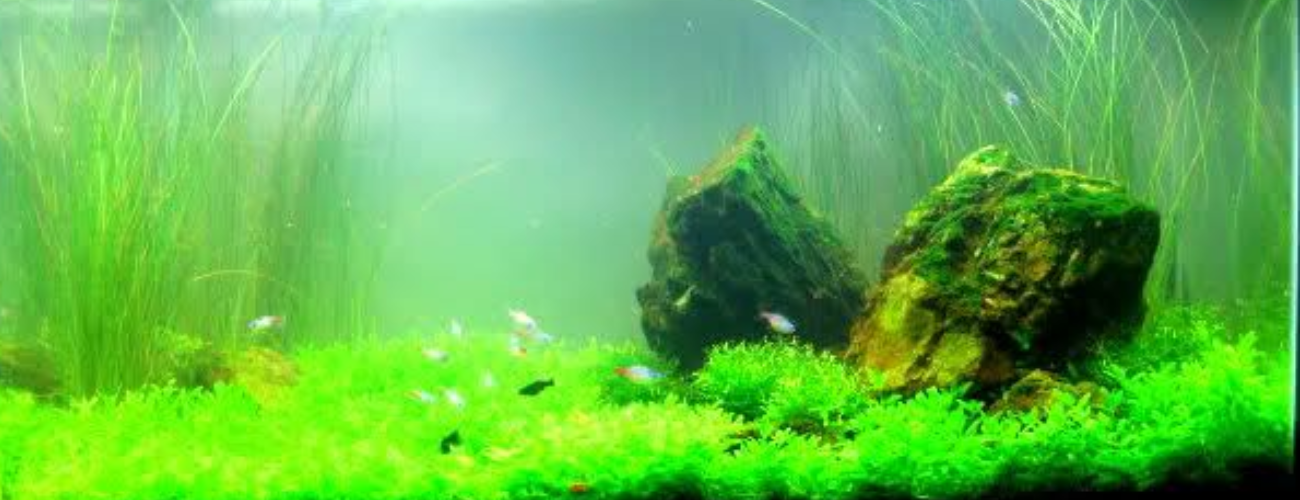How to create the perfect landscaping in your tank

The aquatic plants and ornamental fishes in the aquarium cooperate with each other and complement each other. Aquatic plants can absorb carbon dioxide in the water under light for photosynthesis, and release oxygen for fish’s respiration. Aquatic plants also reduce organic pollution by absorbing nutrients in the water, thereby purifying water quality.
Basic requirements
Moderate lighting, carbon dioxide addition, adequate
fertilizer (basic fertilizer, liquid fertilizer, top dressing), water flow,
water temperature, water hardness, PH value, healthy bottom bed
Basic equipment
- lighting device
Lamps: Fluorescent and high-reflective lamps are better.
- Filter equipment
Generally, it is better to use an outside filter barrel for
the grass tank. The flow rate of the filter cartridge should be 6-9 times the
water volume of the grass tank. Filter material can choose PH ball,
high-quality ceramic ring, volcanic stone, etc. in conjunction with white
cotton
- Heating equipment
Generally, a heating rod is sufficient, and the power is
selected according to the size of the tank.
- Bottom bed
It is usually easier to choose high-quality professional aquatic grass mud, fairy soil and other substrates.

(Check our premium selection of aquarium lamp)
Water plant tank settings
1.
Firstly, spread a light
layer of washed bottom sand on the bottom of the tank, then spread the base
fertilizer, lastly cover with bottom sand again. The bottom sand should be
lower in front and then higher at the back, so the visual effect will be
better. The height and thickness of the bottom bed depends on the size of the
fish tank:
a)
For small fish tanks (below
75cm), the total height of the foreground is about 5cm, and the height of the
background should not exceed 1/4 of the height of the tank;
b)
For large fish tanks (above
90cm) , the total height of the foreground is about 8-10cm, and the background
should be wide and deep if planting large aquatic plants; The bottom sand needs
to be thicker, usually about 15~25cm (the thickness is mainly determined by the
needs of landscaping).
2.
Place the landscaping
materials according to the design drawing and adjust it to the most suitable
position.
3.
Put in 1/3 ~ 1/4 of the
waters slowly, so as not to break the bottom bed. (better to pre-aerate the tap
water for one day)
4.
Plant the grass with a
shorter height first to the predetermined position.
5.
Then add the water slowly.
At this time, you can use the suction cup to fix the water pipe on the wall of
the tank, so that the water flows into the tank will not be too large. At the
same time, place higher plant accordingly until completing the landscaping
Daily maintenance
Lighting time
1. In the first week of the initial setting of the tank, the
lighting time is about 3 to 4 hours, as the plants are still adapting to the
environment so no need too much light. If the lighting time is too long, the
algae will start to breed easily.
2. In the second week of tank installation, the lighting
time can be increased to 5-6 hours.
3. After the third week of setting the tank, the lighting
time can be slowly increased to the normal time, to 8-10 hours.
4. It is better to turn on and off the lights in a gradual
way. The water plants have sleep time, so don't give them lighting 24 hours a
day.
Addition of carbon dioxide
1. Add according to lighting time.
2. Maintain pH 6.4~6.8
3. The dosage must be moderate. Too little will result in
poor growth of aquatic plants, and too much will easily cause hypoxia and death
of aquatic animals.
Change water
1. In the first week of initial setting of the tank, the
recommended frequency is water change is every 2~3 days, and each time replace
half of water
2. After the second week, change the water once a week, and the amount of water change is about 1/3 ~ 1/4.

(Check a combo offer for CO2 system)
Add liquid fertilizer
1. Do not add liquid fertilizer within two weeks of initial
setting of the tank. (When the aquatic plants adapt to the new environment,
they temporarily stop growing and do not absorb nutrients. If liquid fertilizer
is added, it is easy to breed algae.)
2. Start adding liquid fertilizer from the third week
gradually
3. After the fourth week, add it according to the normal usage amount.
temperature setting
The best temperature setting for the aquatic tank is 22oC ~
23oC, but it can be adjusted between 24 oC ~ 26 oC for fish breeding. After the
temperature is set, try to keep it as stable as possible.
When the temperature is too high in summer, you can use a
cooler or use a small fan to dissipate heat. It is best to raise the lamp to
improve the heat dissipation effect.
Waterweed pruning
When water plants change the overall landscape, they need to
be trimmed.
Stem aquatic plants: Generally, they can be trimmed directly
from the top to the required height
Stemless aquatic plants: just trim off the yellow leaves. If
the stems grow too messy, you can cut off the excess stems and pull up the
aquatic plants.
Control and removal of algae
Prevention method:
a. Moderate amount of light and lighting time.
b. Appropriate fertilizer addition (avoid the use of nitrate
chemical fertilizers).
c. Fish should not be fed excessively.

Check our website now for the best shopping experience with lowest price and fasting delivery in UAE




